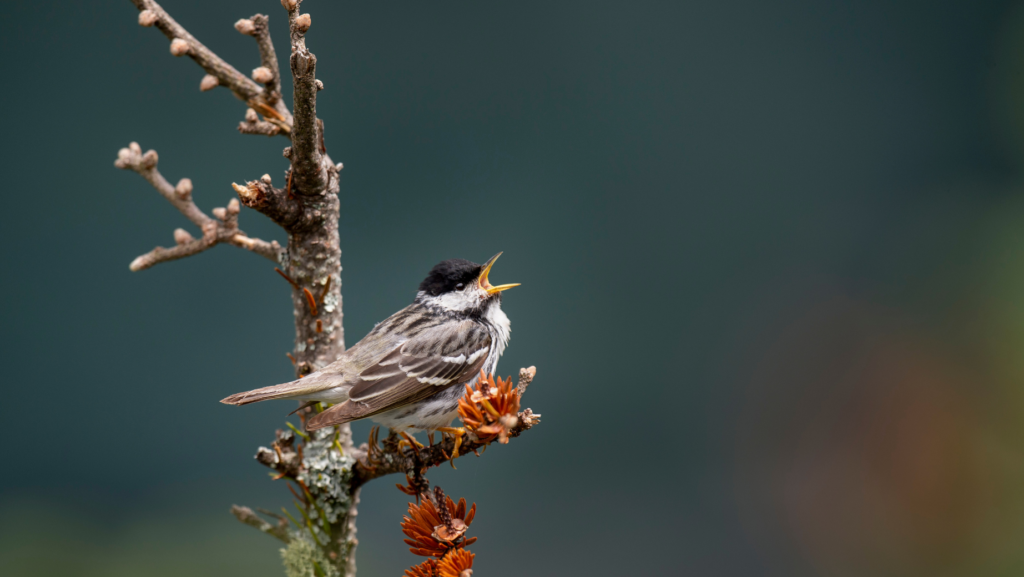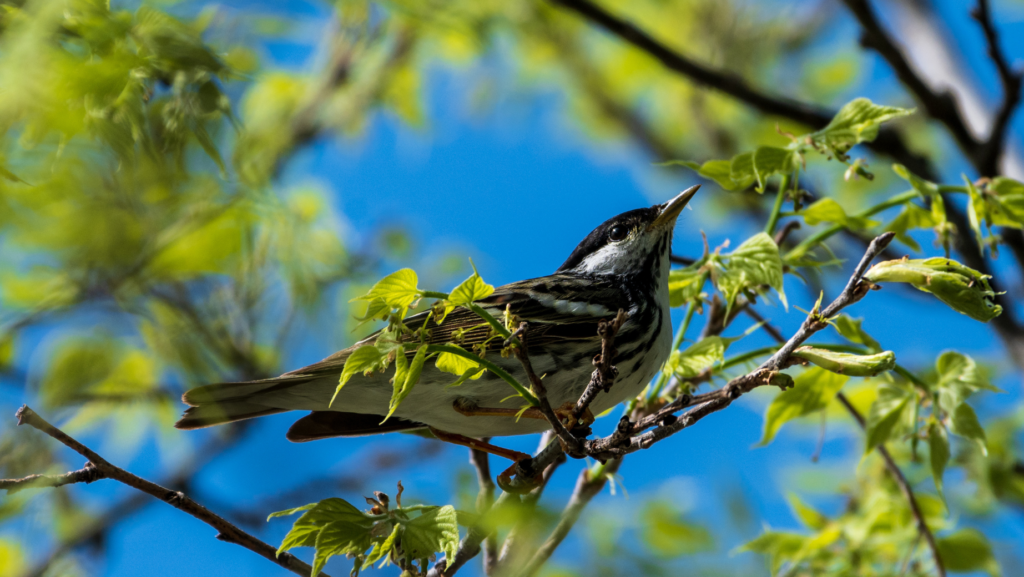The Blackpoll Warbler (Setophaga striata) is a small yet remarkable songbird found in North America.
Birth and Growth

The Blackpoll Warbler (Setophaga striata) is a small yet remarkable songbird found in North America. Born from eggs laid in cup-shaped nests, often nestled in the branches of spruce or fir trees, Blackpoll Warbler chicks hatch after an incubation period of around 11 to 12 days. The chicks are altricial, meaning they are born in a relatively undeveloped state and depend on parental care for nourishment and protection.
As the chicks grow, they are fed a diet consisting mainly of insects. The parents tirelessly forage for caterpillars, spiders, and other arthropods, providing a protein-rich diet crucial for the rapid development of their offspring. The fledgling period lasts approximately 10 days, during which the young birds gradually acquire their adult plumage.
Adult Life and Habitat

Upon reaching adulthood, the Blackpoll Warbler undergoes a remarkable transformation. The male sports striking black and white plumage with a distinctive black cap on its head, while the female exhibits more muted tones with a yellowish hue. These migratory birds are known for their impressive long-distance journeys.
During the breeding season, Blackpoll Warblers inhabit the boreal forests of North America, specifically favoring areas with spruce and fir trees. They can be found in Alaska, Canada, and the northeastern United States. However, their migratory patterns take them to a different habitat during the non-breeding season.
Migratory Journey and Food Sources

One of the most astonishing aspects of the Blackpoll Warbler’s life cycle is its migratory journey. These small birds embark on one of the longest migrations of any North American warbler, covering thousands of miles. In the fall, they fly across the Atlantic Ocean to South America, often making a non-stop journey of up to 72 hours. During migration, they rely on a diverse diet that includes fruits, nectar, and insects, allowing them to sustain their energy levels for the arduous journey.
Reproduction and Nesting
The Blackpoll Warbler engages in monogamous relationships during the breeding season. The female constructs a cup-shaped nest, typically positioned on a horizontal tree branch, using a combination of twigs, grasses, and spider silk. After laying a clutch of eggs, usually ranging from three to five, the female incubates them for about 11 to 12 days until hatching.
Parental duties are shared, with both male and female taking turns feeding the chicks once they hatch. The nestlings grow rapidly, developing their feathers and gaining the strength needed for their first flight. This family-oriented approach contributes to the survival and successful reproduction of the species.
Death and Conservation

The lifespan of a Blackpoll Warbler can vary, with many individuals succumbing to natural predators, environmental challenges, or accidents during migration. These birds play a vital role in maintaining ecological balance by controlling insect populations, making them an integral part of their respective ecosystems.
While Blackpoll Warbler populations are not currently considered endangered, they face threats from habitat loss due to deforestation and climate change. Conservation efforts are crucial to preserving the diverse habitats they rely on during their annual cycle, ensuring these vibrant birds continue to grace the boreal forests and contribute to the rich tapestry of North American avian life.

